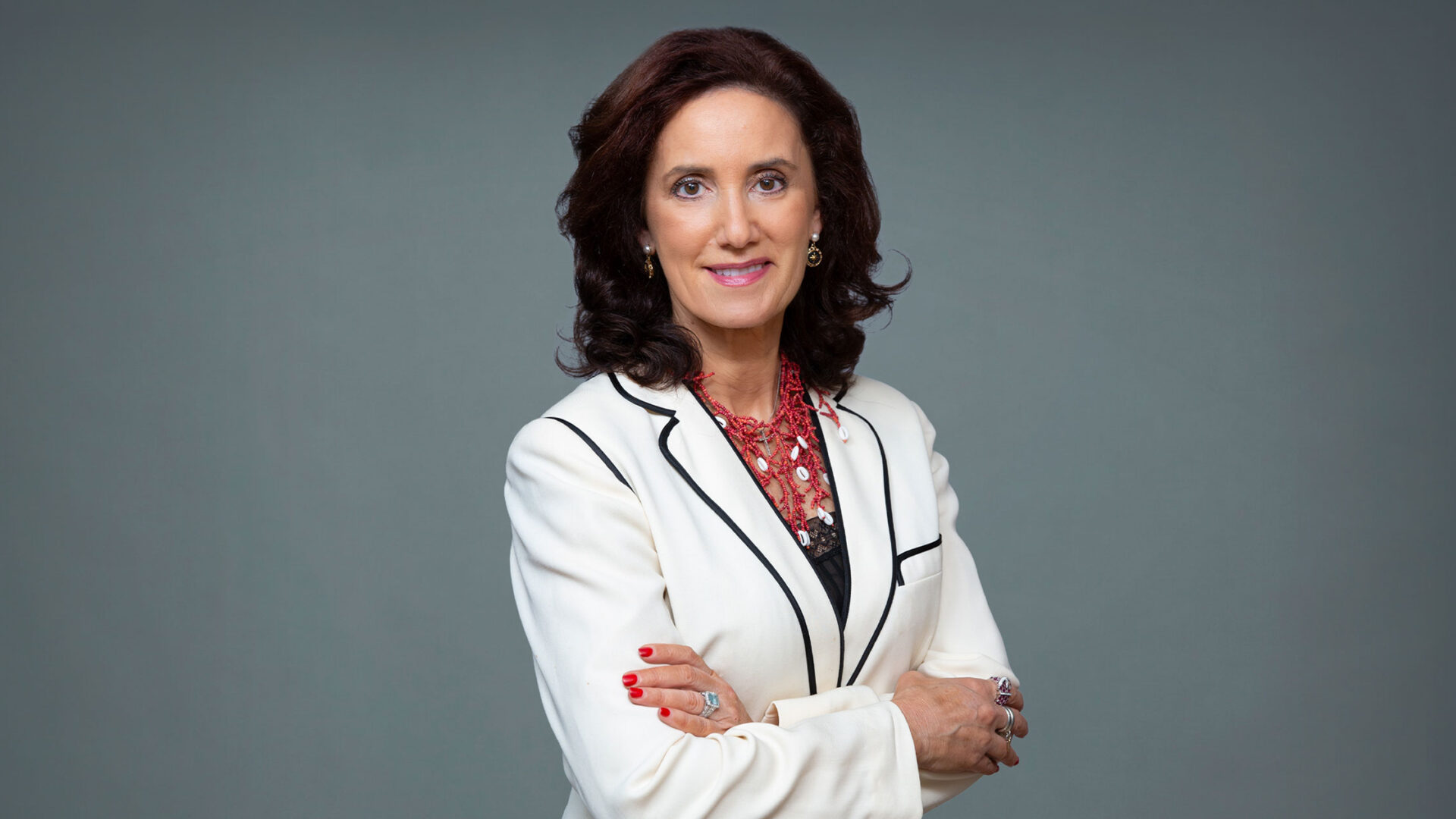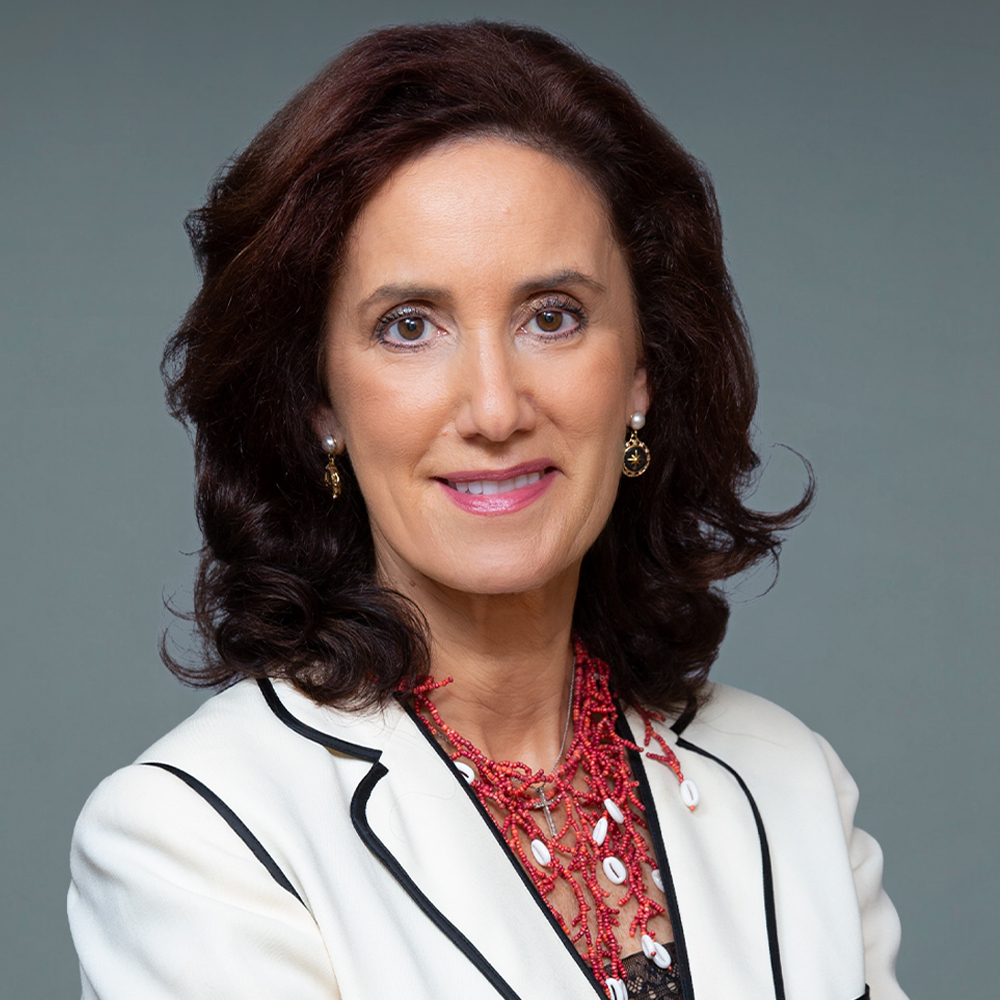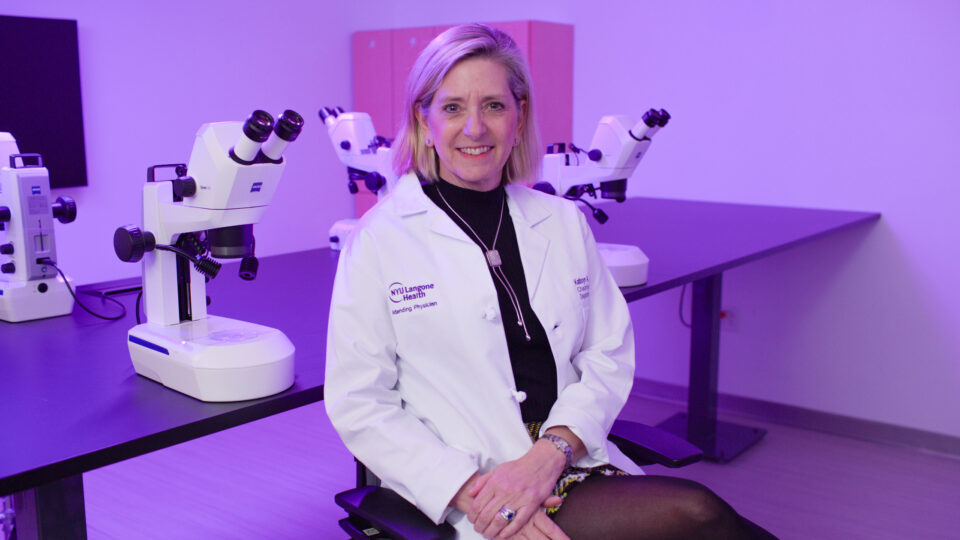Three decades ago, many ophthalmologists doubted whether dry eye disease was a real condition. Pioneering ophthalmologist Mina Massaro-Giordano, MD, not only helped raise early awareness about the surprisingly prevalent and complex syndrome but also brought relief to thousands of patients through her famous Penn Dry Eye and Ocular Surface Center.
Dr. Massaro-Giordano recently brought her renowned expertise to NYU Langone Health, where she is directing the newly established Dry Eye Service in the Department of Ophthalmology. Here, she talks about how she first became interested in the condition, how treatment options have continued to grow, and what she hopes to achieve with her latest endeavor.
Physician Focus: How did you first become interested in dry eye disease?
Dr. Massaro-Giordano: My mother is a designer and seamstress and when I was a teenager, she spent a lot of time working with fabrics on the sewing machine. She would have these episodes where she couldn’t see or work because her eyes were so dry. This is where my inspiration came from.
I saw her suffer and be dismissed by ophthalmologists. That prompted me early in my career to focus on ocular surface disease and dry eye—to figure out what was going on with my mom and help treat her. Her symptoms improved once we realized that she had a few conditions, including anterior basement membrane dystrophy.
“Back then, the prevailing thought was, ‘OK, it’s dry eye. Put in some artificial teardrops.’ But I taught faculty and residents that it’s a multifactorial problem that commonly needs inflammation control.”
Mina Massaro-Giordano, MD
When I started my residency in ophthalmology in 1995, though, I realized that most physicians didn’t pay attention to the tear film and ocular surface. Once I finished my training, my goal was to create a center where patients could be diagnosed with the actual cause of their ocular surface disease, whether it was dry eye or something else.
Physician Focus: That focus led to the Penn Dry Eye and Ocular Surface Center. What made it unique?
Dr. Massaro-Giordano: We used state-of-the-art techniques to delve into the diagnosis and built an interdisciplinary team—there was no other center like it when we opened. Within ophthalmology, we brought together oculoplastic, cornea, and contact lens specialists to treat these complex patients. Outside of ophthalmology—and this was very unique—we established close collaborations with rheumatologists, dermatologists, allergists, neurologists, and pain specialists.
Back then, the prevailing thought was, “OK, it’s dry eye. Put in some artificial teardrops and you’re cured.” But I taught faculty and residents that it’s a multifactorial problem that commonly needs inflammation control. Over the years, we also learned that nerves play an important role in understanding the ocular surface.
Physician Focus: How has the approach to dry eye changed over the past 30 years?
Dr. Massaro-Giordano: Dry eye disease started to become more accepted in the late ‘90s. Around that time, cataract surgeons realized that if a patient’s tear film wasn’t healthy, they couldn’t take accurate measurements for an intraocular lens, impacting surgical outcomes.
Patients also became more vocal about their disease process, and that it wasn’t just a symptom. As a field, we grew to understand the underlying etiology and the significant impact on patients’ quality of life. We now have several treatments we can offer, which weren’t available in the 1990s.
In my own work, I helped lead the clinical trials that supported FDA approval of cenegermin, a recombinant human nerve growth factor for neurotrophic keratitis. This really helps a subset of patients whose nerves become damaged and don’t function, whether from a viral infection, chronic dry eye, trauma, or surgery.
Physician Focus: What are the biggest unmet needs in ocular surface disease?
Dr. Massaro-Giordano: There have been numerous FDA-approved drugs. But we need more because there are so many different mechanisms of inflammation and not everyone improves with what’s available. For example, calcineurin inhibitors suppress a certain aspect of the inflammatory cascade, but they are only effective in about 30 to 40 percent of patients.
“I want to ensure patients get the help that they need while we continue to innovative and develop the world’s leading academic ocular surface center.”
We need to advance the basic science in order to look at other pathways for treatment. Many times, treatment requires more than one drug, like anti-inflammatory drugs, better lubricants, and drugs that help regulate nerve firing and nerve growth.
One subset of patients that I’ve been incredibly interested in treating are those with neuropathic corneal pain, or corneal neuralgia. They’re miserable but have no signs on the ocular surface; you have to know what to look for. They see well, but yet they’re in chronic pain because their nerves don’t function well, and the pain over time has become centralized.
It has been shown that inflammation and abnormalities in corneal nerves can be seen at a detailed microscopic level, allowing me to work with other leaders in the field to come up with new questionnaires, algorithms, and better diagnostic methods.
Physician Focus: What do you hope to accomplish at NYU Langone?
Dr. Massaro-Giordano: I’m excited to develop this service and build a robust clinical trial program. For a trial that’s already underway, we’re studying the effectiveness of wide-field scanning specular microscopy in detecting and monitoring corneal diseases. We’ll be starting another one that is testing an investigational treatment for patients with atopic allergic conjunctivitis, which goes hand in hand with dry eye. Many times, patients may think they have dry eye but it’s really an allergy, or vice versa. A future trial will test the effectiveness of an eyedrop in alleviating corneal nerve pain.
NYU Langone provides access to a huge patient base to support these trials, and to bright colleagues who can join this collaborative effort. Part of my vision is to lead patient seminars and webinars as well to help educate them about dry eye disease.
In the future, I hope this area of ophthalmology can be a true specialty like oculoplastics and neuro-ophthalmology. More importantly, I want to ensure patients get the help they need while we continue to innovative and develop the world’s leading academic ocular surface center. I have so much more that I want to do.






